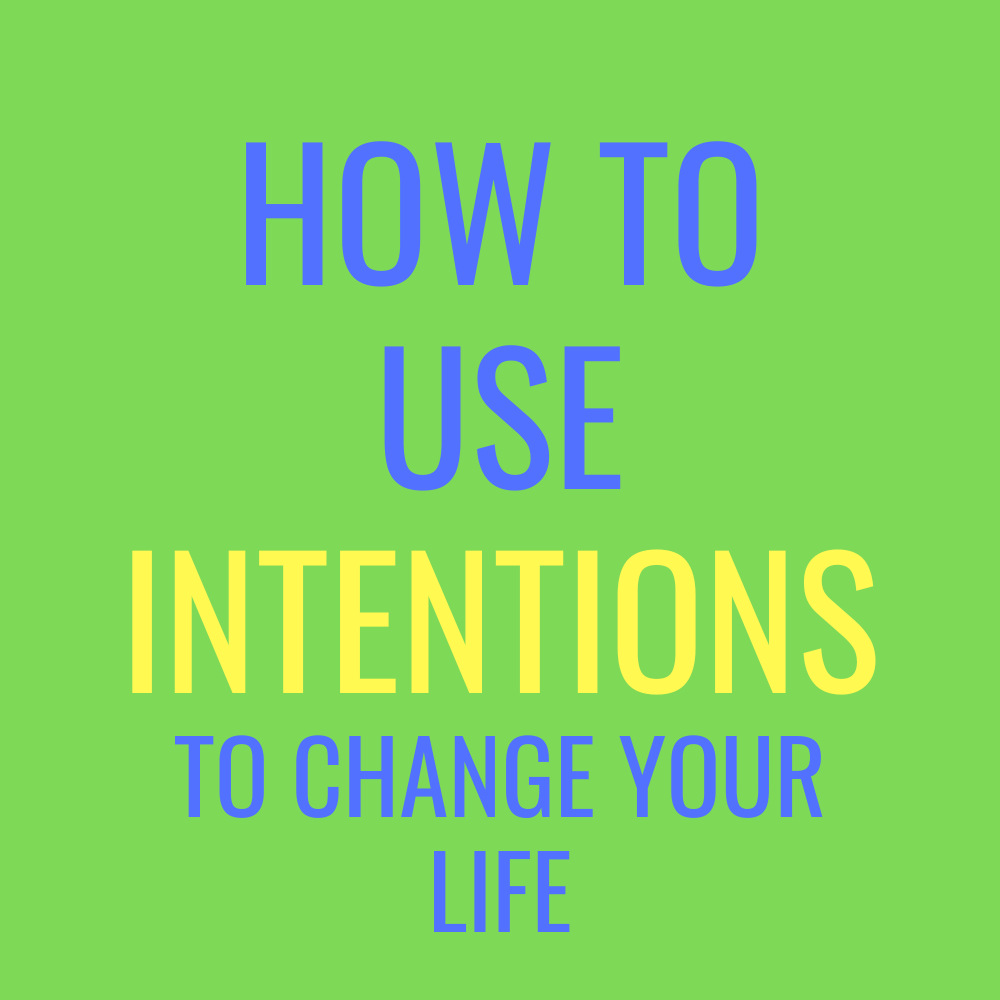HOW TO USE INTENTIONS TO CHANGE YOUR LIFE
You can listen to an audio version of this post by clicking here.
We can use intentions to change the way others perceive us, decide how we will treat others, and shape our actions in specific situations.
When working with individuals who want to improve their confidence or stop anxiety from holding them back, I often talk about the power of intentions. Although often overlooked, the intentions we choose at the start of the day can lead to major changes, forming or reinforcing mental habits that impact on our lives. We can use intentions to change the way others perceive us, decide how we will treat others, and shape our actions in specific situations.
In this post I will explain two different types of intentions and take you through an exercise that can dramatically change the way others see you. This exercise can bring positive results for everyone, but will be particularly helpful for those who struggle with social anxiety.
TWO TYPES OF INTENTIONS
There are two different types of intentions that often intertwine and overlap:
Values driven intentions that shape the way we live
Behavioural intentions that impact how we act in specific situations
1. Values focused intentions that shape the way we live. These intentions tend to be consistent throughout our lives, taking us in a particular direction, although they can change as we learn and grow. They aren’t specific goals, such as ‘lose weight’, ‘increase exercise’, or ‘get a new job’, but are more focused on following our values, taking us in a consistent direction. They can impact on the choices we make and the way we interact with the world.
For example, someone whose values are open-mindedness, kindness, and honesty, can hold the intention to live by those values every day. This allows them to express themselves through their actions and lead authentic lives. Most people don’t take the time to work out their values, but only have a vague understanding of who they are. This leaves them open to influence of other people’s values, often leading to inauthentic and unfulfilling lives.
2. Behavioural intentions that impact how we act in specific situations. These are intentions that we use to plan how we will behave in specific situations. They can help us get the most out of the situation and also change the way others perceive us. For example, someone can plan how they intend to come across in a job interview, aiming to give a firm handshake, make eye contact with the interviewer, and sit in a confident posture in the chair.
It is this second specific type of intentions - behavioural intentions - that the following exercise will focus on. By making small but consistent intentions in this way, we can learn to act in ways that incrementally increase positive behaviours. While these behaviours may seem like tiny changes, making small daily changes in this way can transform our lives over longer periods of time. If you make the intention to change your behaviour in a small but consistent way every day, your life will look completely different in one year’s time.
EXERCISE: CHANGING BEHAVIOUR IN SPECIFIC SITUATIONS
You can also have access to a digital document and printable template of this exercise by clicking here: INTENTIONS EXERCISE TEMPLATE
STEP 1. CHOOSE THE SITUATION
The first step is to the choose situation you want to tackle. It may be beneficial to start small so you don’t get overwhelmed.
STEP 2. CREATE AN INTENTION
By raising awareness of how we think we are perceived and setting an intention to change this, we can dramatically change the way other people see us. This works with strangers we are meeting for the first time and friends and acquaintances too. With small changes and consistent behaviour, it’s never too late to change the way others view you. Creating an intention has three stages that involves writing two brief paragraphs and one further short sentence. The writing part of the exercise is important, just thinking it through won’t have the same results.
Stage 1 — Write a paragraph describing what you believe is the first impression you currently make in your chosen situation. How do you normally ‘show up’ in this situation? How does that cause other people to perceive you? Think about how you talk, what your body language is like, and your expectations of the situation.
Stage 2 — Write a second paragraph that describes what you want your first impression to be. How would you like to be perceived by others? Who are you when you are at your best and displaying your core values? How do you speak? What is your body language like?
Stage 3 — Now write a short statement that describes what you project to others today and what you will project to others tomorrow. So, for example, I might write today I am shy and timid, but tomorrow I will be more curious and engaging. This is called the intentional first impression. The intentions we set for ourselves can have a huge impact on our behaviour.
_
By completing this exercise you should be able to determine how you behave in a much more own-able, decisive way, and focus on the variables you have control over. Don’t leave it up to others to determine who you are and how you ‘show up’. If you consistently create a conscious plan to be your best self when you meet with people, then you’ll be much more able to ‘show up’ that way.
You can also have access to a digital document and printable template of this exercise by clicking here: INTENTIONS EXERCISE TEMPLATE
